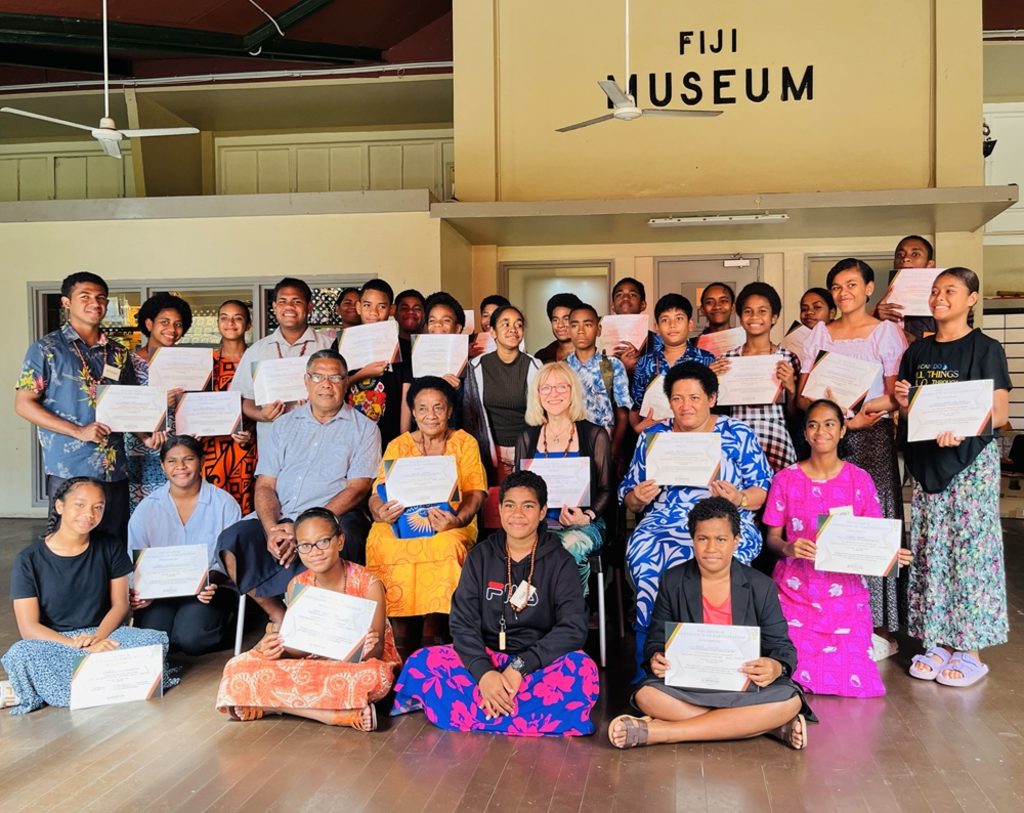AT a time when technology has taken centre stage in people’s lives, culture and tradition are slowly losing their significance in society.
As technology slowly takes over, we ask ourselves how can culture and tradition be maintained for future generation?
The Fiji Museum last week went out of its way to provide hands-on learning and cultural creativity for 30 students through its school holiday program.
With the theme ‘Creating with culture: pottery, masi, theatre’ the program allowed students to explore and celebrate Fiji’s rich heritage in traditional arts and storytelling.
The program allowed the young participants to learn from experts in their field, potter Amelia Lesuma from Nasilai, Rewa, masi artisan Laijipa Kebaitoga from Moce, Lau and playwright and theatre teacher Professor Angie Farrow from New Zealand.
For three days, participants learned how to create masi and pottery from its initial stage right to the final phase. The students also learned about theatre and the significance of storytelling in their culture.
Intertwining these different cultural practices allowed students to appreciate their cultural heritage and identity.
Fiji Museum manager archaeology Mereoni Camailakeba said it was great seeing young students show interest in the preservation of culture and heritage during their school break.
“We (adults) had a lot of interaction with our elders growing up compared to these young people as they are more into technology now, but seeing them show interest in the program is exciting,”she said.
The museum was able to sign in 30 participants within four hours after putting out their invitation on their social media platform.
“We even had students still calling trying to book a spot, but unfortunately we can only cater for 30 students in this program.
“With a short time to organise the program, we still had a good turnout and outcome.”
She said they wanted to do carving too, but seeing how students had only a week to prepare for school they only organised the sessions for theatre, pottery and masi-making.
“We were fortunate that Professor Farrow was able to join us with Amelia Lesuma and Laijipa Kebaitoga.
“Given their experiences, we were quite fortunate to have them share their knowledge with the students. The students that participated were not only from within Suva, but came as far as Ba.”
Ms Camailakeba said apart from just facilitating the program, the museum was also able to create awareness.
“We do not have the time or the manpower to do a lot of awareness programs, but we know that through this the message of preserving culture and heritage will be shared.
“The 30 students that were present will be able to go and spread the message to their classmates, families and friends. They will encourage its importance and motivate others to show an interest in cultural program whether it’s through the museum or through other spaces.”
Ms Camailakeba said theatre was something Fijians are now slowly grasping.
“To see these students experience theatre through Professor Farrow’s classes is exciting. They become more comfortable, and they socialise more – the ones that were shy were able to talk and express themselves freely.
“These students were able to do storytelling by sharing about the myths and legends they have heard about from home. So it was really exciting to see them do that.
Participant, Josua Komai, 18, said he was happy to have learned about pottery, masi-making and theatre during the school break.
Komai, who hails from Suva Lailai in Burebasaga in Rewa, is a student of Assemblies of God High School.
He said the program taught him about the traditional way of life and its importance.
“Before I attended the class I wasn’t fully aware of how pottery or masi was made. I always watched reels about these traditional craft, but was so exciting to see and experience it firsthand,” Komai said.
“I hope to teach others when I go home.
“We have discussed with Bu Amelia about visiting her in her village and learning more about pottery making in the future.
“It’s good to come and learn about pottery and masi-making especially during a time when technology has affected our cultural way of life.”
Marist Brothers High School student Sevuloni Dibez, who spoke on behalf of the participants, thanked God for his guidance throughout the three-day program and the Fiji Museum staff for hosting such a wonderful event.
He thanked the parents, their facilitator Mereoni and three trainers too.
Fiji Museum chief executive officer, Armando Lowe thanked the students for being part of the program. The event was held at the Fiji Museum verandah from May 20 to May 22.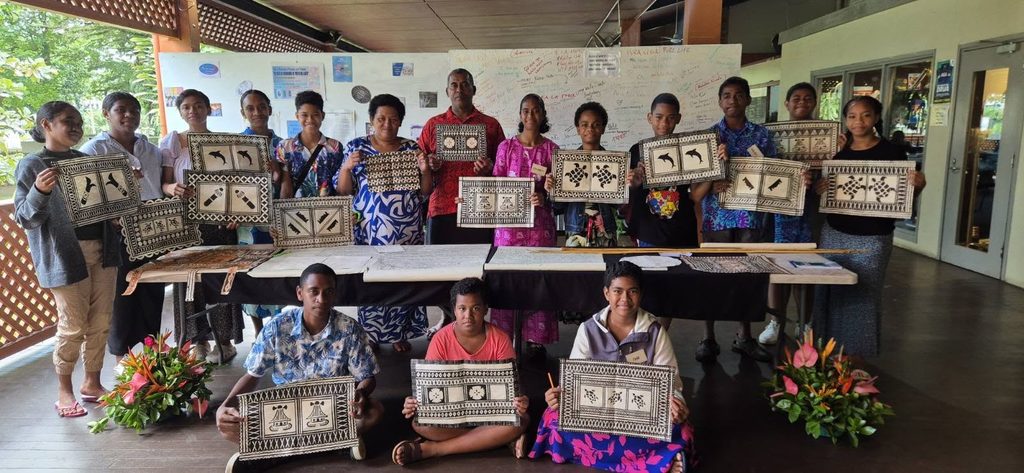
The students with their different masi designs. Picture: FIJI MUSEUM
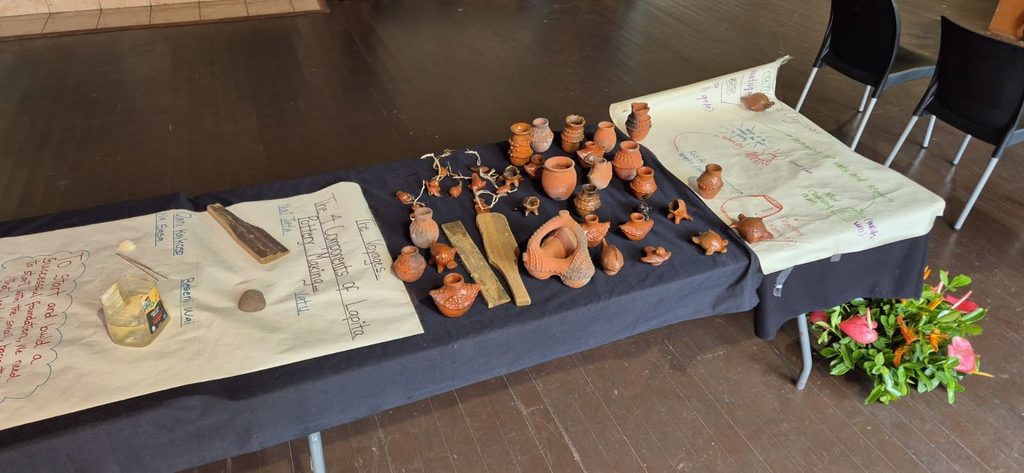
The pottery that was created by the students. Picture: FIJI MUSEUM
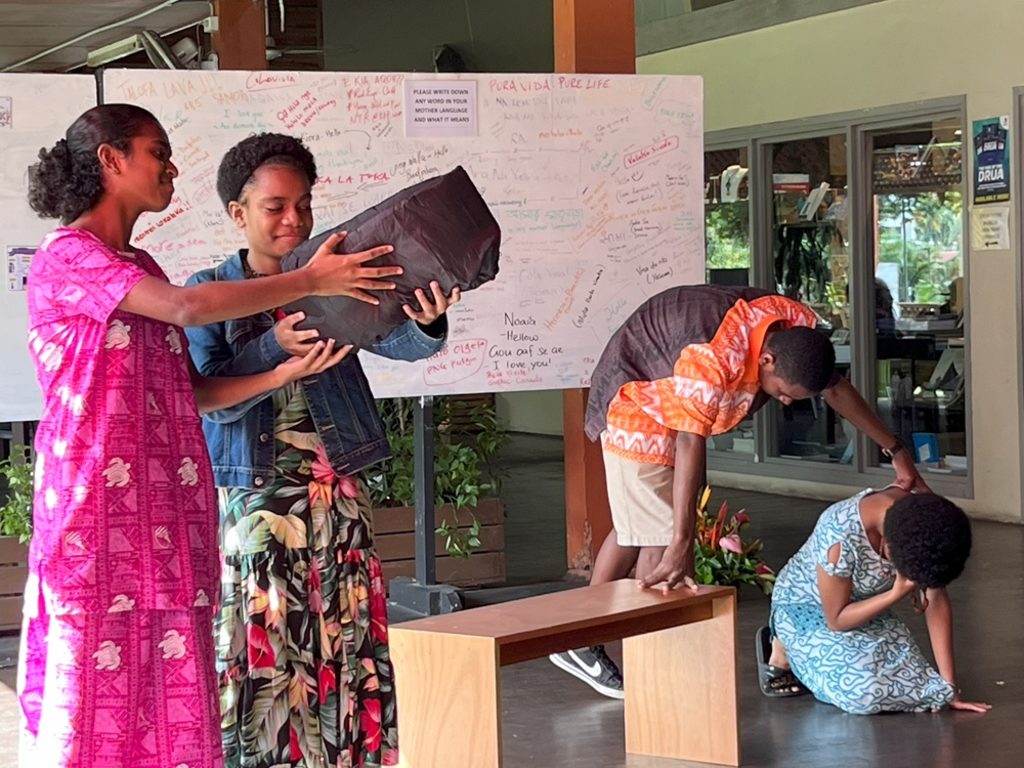
The students present their theatre piece. Picture: ANA MADIGIBULI
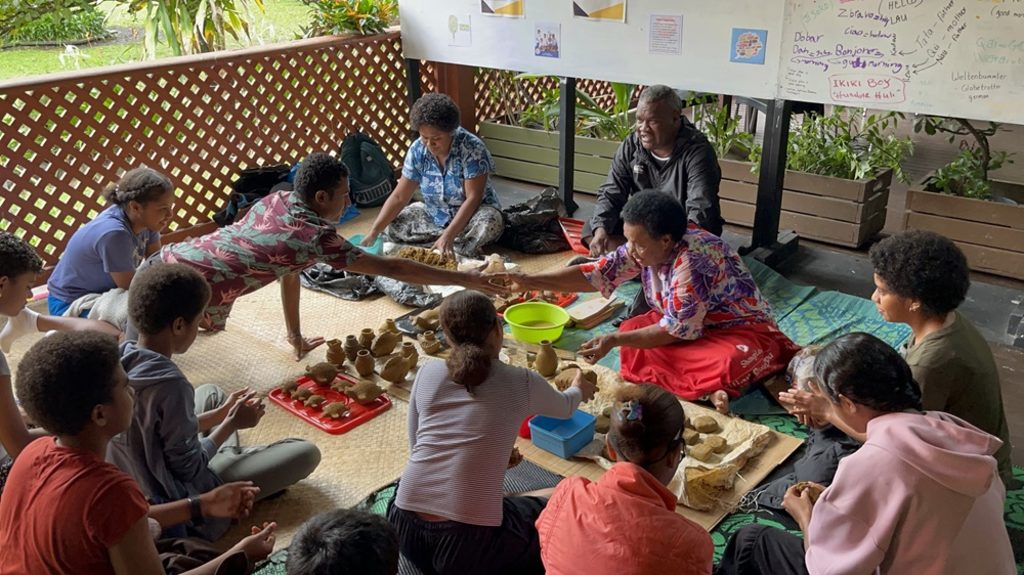
Potter, Amelia Lesuma hands Sevuloni Dibez a piece of clay during the pottery session. Picture: ANA MADIGIBULI
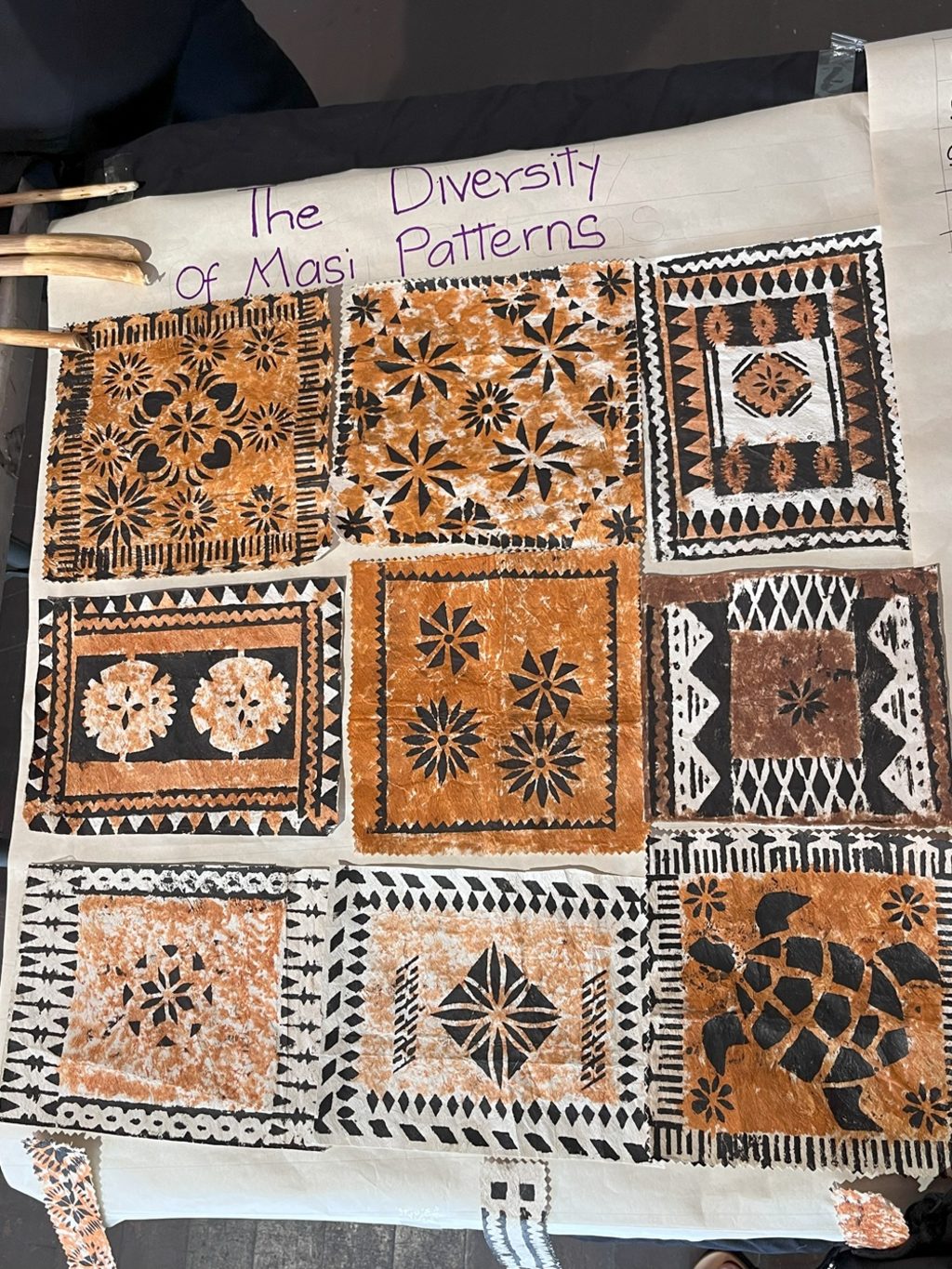
The diverse masi patterns done by the students during their training. Picture: ANA MADIGIBULI
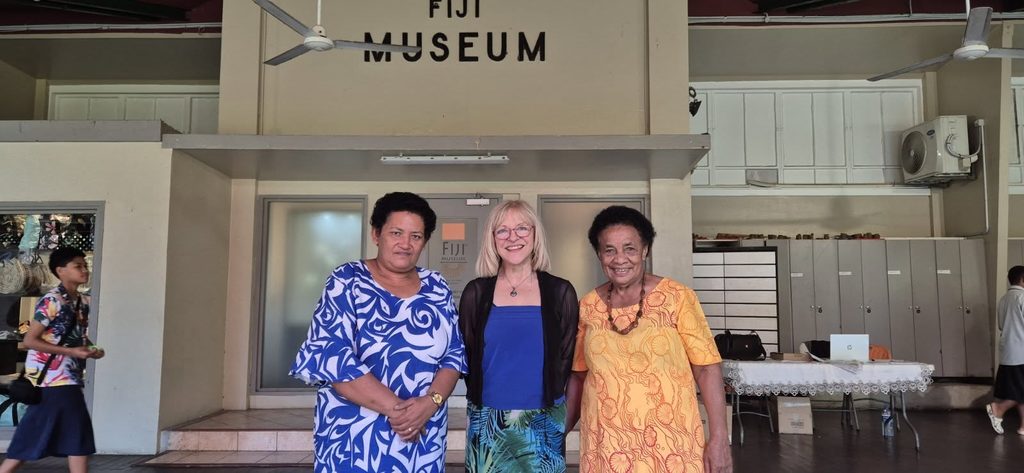
The teachers for the three-days program (from left) masi artisan, Laijipa Kebaitoga of Moce, Lau, playwright and theatre teacher, Professor Angie Farrow from New Zealand and potter, Amelia Lesuma from Nasilai, Rewa. Picture: FIJI MUSEUM
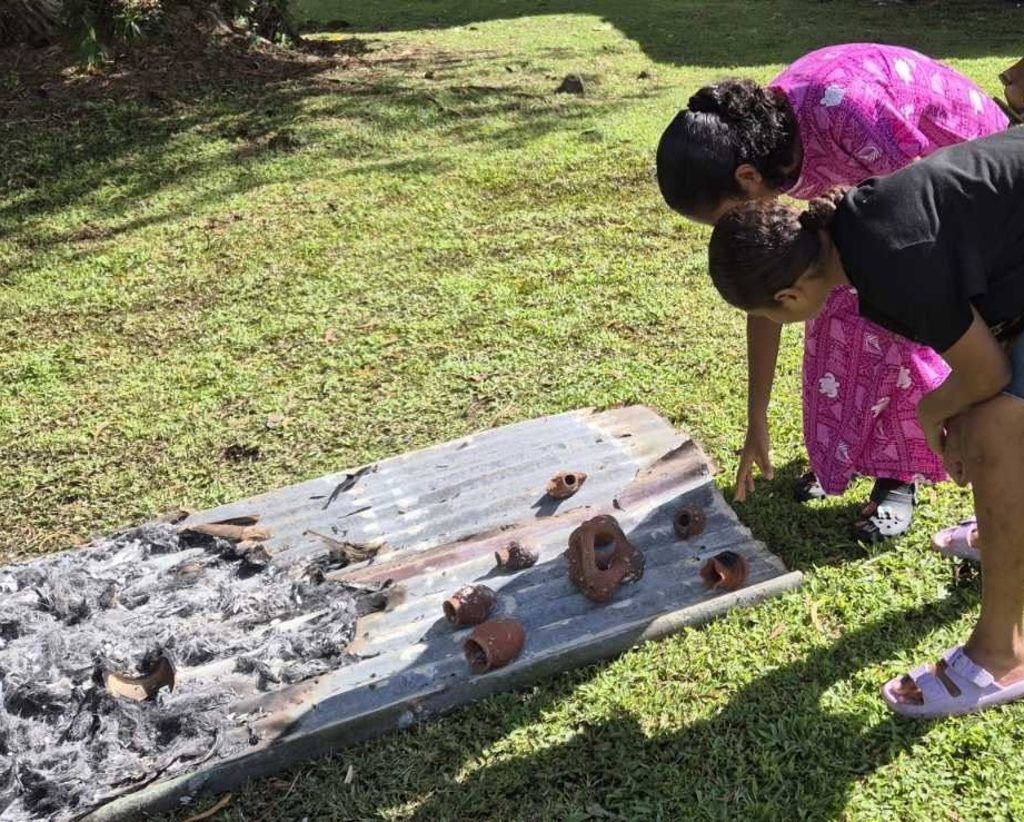
The students have a look at their final pottery product after it was placed in a fire. Picture: FIJI MUSEUM

